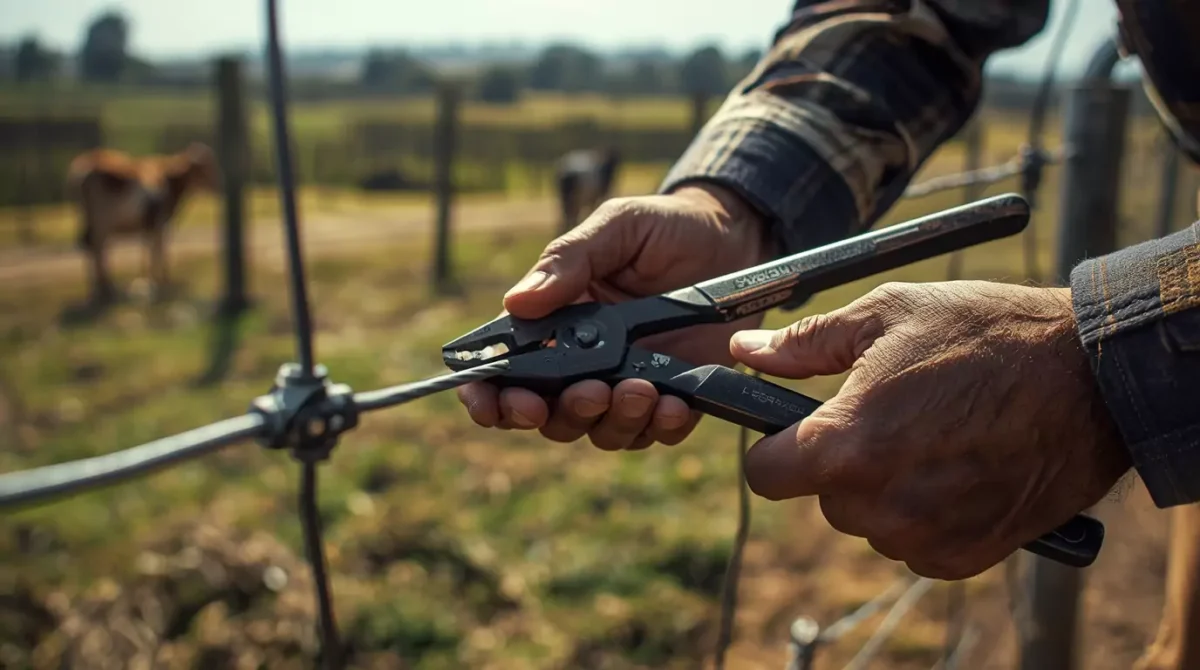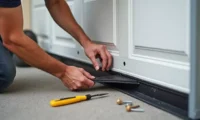You’re standing there with your busted fence charger.
- Why Most People Get This Wrong
- What Makes Electric Fence Maintenance Different
- The Voltage Testing Problem
- 💖 You Might Also Like
- Specialized Tools That Actually Matter
- 1. Electric Fence Voltage Tester
- 2. Insulated Wire Tools
- 3. Fault Finders
- 4. Ground Resistance Testers
- When General Tools Are Fine
- The Real Cost Breakdown
- ✨ More Stories for You
- My Real Experience Story
- Safety Isn’t Negotiable
- The Maintenance Schedule Reality
- 🌟 Don't Miss These Posts
- When To Upgrade Your Tools
- Common Mistakes I See
- The Decision Framework
- What Success Actually Looks Like
- Frequently Asked Questions
- The Bottom Line
Sparks flying where they shouldn’t.
And you’re wondering: “Do I really need some fancy specialized tool for this, or can I just grab what’s in my toolbox?”
I’ve been there.
Let me break this down so you can stop wasting money and time.
Why Most People Get This Wrong
Here’s what happens.
Someone buys an electric fence.
They use their regular pliers, their everyday multimeter, their basic wire cutters.
Then they wonder why their fence keeps failing.
Why their voltage drops.
Why they’re out there every other weekend trying to fix the same problems.
It’s not the fence.
It’s the tools.
What Makes Electric Fence Maintenance Different
Voltage matters.
Like, really matters.
Your regular fence? You can eyeball if it’s broken.
Your electric fence? You need to know if you’re pushing 4,000 volts or 400.
That’s the difference between keeping livestock in and watching them walk through like it’s a suggestion.
The Voltage Testing Problem
Your standard multimeter from the hardware store?
It caps out around 600 volts.
Your fence should be running 5,000+ volts.
See the issue?
You’re measuring with the wrong ruler.
💖 You Might Also Like
Specialized Tools That Actually Matter
Let me tell you what I use.
Not because they’re fancy.
Because they work.
1. Electric Fence Voltage Tester
This isn’t optional.
It’s the difference between guessing and knowing.
A proper fence voltage tester reads up to 10,000 volts.
You touch it to the wire.
You know exactly what’s happening.
No math. No conversion. No guessing.
I check mine every week.
Takes 30 seconds.
Saves me hours of troubleshooting later.
2. Insulated Wire Tools
Regular wire cutters conduct electricity.
Shocking, right? (Pun intended.)
Insulated cutters and pliers have rubber coating that protects you from the charge.
Is it life or death? Usually not.
Is it annoying to get zapped every time you adjust a connection? Absolutely.
3. Fault Finders
This tool changed my life.
You walk your fence line with it.
It beeps louder as you get closer to shorts or grounds.
Before I had this, I’d walk miles trying to find one bad spot.
Now? I walk straight to the problem.
4. Ground Resistance Testers
Most fence problems aren’t the fence.
They’re the ground rod system.
Your ground needs to be under 500 ohms of resistance.
A specialized ground tester tells you this instantly.
Your regular tools? They tell you nothing.
When General Tools Are Fine
I’m not saying throw out your toolbox.
Some jobs don’t need specialized equipment.
Use your regular tools for:
- Driving in fence posts
- Hanging insulators on wood posts
- Cutting poly wire or poly tape
- Tightening gate handles
- General post hole digging
Basically, anything that doesn’t involve active electricity.
Makes sense, right?
The Real Cost Breakdown
Here’s where people mess up.
They think: “Why spend $150 on a specialized tester when my $20 multimeter works?”
Then they spend three Saturdays trying to find why their fence voltage is low.
Time is money.
Frustration has a cost.
A basic specialized toolkit costs about $200-300:
- Fence tester: $50-80
- Insulated tools: $30-50
- Fault finder: $80-120
- Ground tester: $40-60
That same toolkit using general tools?
Costs less upfront.
But you’ll spend way more time troubleshooting.
And you still won’t get accurate readings.
✨ More Stories for You
My Real Experience Story
Last summer, my neighbor called me.
His cattle kept getting out.
He’d tested his fence with a regular multimeter.
Said it showed “plenty of voltage.”
I brought over my fence tester.
His fence was running at 800 volts.
Should’ve been 5,000+.
His multimeter couldn’t even measure that range properly.
We found a short using my fault finder in 10 minutes.
He’d been searching for weeks.
Fixed it. Problem solved.
He bought his own specialized tools the next day.
Safety Isn’t Negotiable
Electric fences aren’t dangerous like power lines.
But they’re not toys either.
Specialized tools give you:
- Protection from repeated shocks
- Accurate readings that prevent dangerous situations
- Faster repairs that mean less exposure time
- Peace of mind that your fence is actually working
General tools leave you guessing.
Guessing with electricity is dumb.
Don’t be dumb.
The Maintenance Schedule Reality
Here’s what weekly maintenance looks like with proper tools:
Monday morning check (5 minutes):
- Walk fence line visually
- Test voltage at three points
- Mark any issues
Monthly deep check (30 minutes):
- Full voltage readings
- Ground system test
- Insulator inspection
- Connection tightness check
Quarterly troubleshooting (as needed):
- Fault finding for any drops
- Resistance testing
- Equipment verification
With general tools?
Every check takes 3x longer.
And you’re never really sure if you found the problem.
🌟 Don't Miss These Posts
When To Upgrade Your Tools
You don’t need everything day one.
Start with what matters most.
Get these first:
- Voltage tester (absolutely first)
- Insulated pliers
- Fault finder (once you have more than 500 feet of fence)
Add these as you grow:
- Ground resistance tester
- Professional grade voltage tester
- Specialized post insulators and tensioners
Common Mistakes I See
Mistake #1: Testing voltage with regular multimeters
They can’t read high enough.
You’re flying blind.
Mistake #2: Using uninsulated tools on live fences
It’s uncomfortable at best.
Dangerous at worst.
Mistake #3: Not testing ground systems
Your fence could be perfect.
But if your ground sucks, your fence won’t work.
Mistake #4: Buying the cheapest specialized tools
Some cheap voltage testers are barely better than guessing.
Mid-range is the sweet spot.
The Decision Framework
Ask yourself:
“How much fence am I maintaining?”
Less than 500 feet?
- Basic voltage tester + insulated pliers = you’re good
500-2000 feet?
- Add a fault finder to save time
More than 2000 feet or commercial?
- Full specialized toolkit isn’t optional
- It’s a business expense
What Success Actually Looks Like
You’ll know you have the right tools when:
- You can test your fence in under 5 minutes
- You find problems in one pass, not five
- You’re not getting shocked doing basic maintenance
- Your fence voltage stays consistent
- You stop dreading maintenance days
That’s the goal.
Tools should make your life easier.
Not harder.
Frequently Asked Questions
Can I use a regular multimeter for electric fence testing?
No, and here’s why.
Regular multimeters max out around 600 volts.
Your fence should run 4,000-7,000 volts.
You need a specialized fence tester that reads up to 10,000 volts for accurate measurements.
What’s the most important specialized tool to buy first?
A voltage tester, hands down.
Everything else is about convenience.
But you literally can’t maintain an electric fence properly without knowing the voltage.
It’s like trying to cook without being able to taste the food.
Are insulated tools really necessary for fence maintenance?
Necessary? No.
Worth it? Absolutely.
Getting shocked isn’t dangerous with most fence chargers, but it’s annoying.
And if you’re doing regular maintenance, those little shocks add up fast.
How do I know if my ground system is working properly?
Use a ground resistance tester.
Your reading should be under 500 ohms.
If it’s higher, your fence won’t work right no matter what else you do.
Most fence problems are actually ground problems.
Can I borrow specialized tools instead of buying them?
Sure, if you can find someone nearby who has them.
But here’s the thing.
You need to check your fence weekly.
Borrowing tools weekly gets old fast.
If you own livestock or have a permanent fence, just buy the tools.
What’s the difference between cheap and expensive fence testers?
Accuracy and durability.
Cheap ones (under $30) often give inconsistent readings.
Mid-range ($50-80) are reliable and last years.
Expensive ($100+) are for professionals managing multiple properties.
Do I need different tools for different fence types?
Mostly no.
High-tensile, poly wire, poly tape—they all need the same basic testing tools.
The difference is in the installation tools, not the maintenance tools.
How often should I test my electric fence voltage?
Weekly at minimum.
Daily if you’re running livestock you can’t afford to lose.
It takes 30 seconds with the right tool.
What voltage should my electric fence be running?
Most livestock fences should maintain 4,000-7,000 volts.
Below 3,000 volts, animals will push through.
Above 8,000, you’re just wasting electricity.
Can weather affect my fence readings?
Yes, absolutely.
Wet conditions can cause voltage drops due to increased grounding.
Dry conditions might show falsely high readings.
Test in different conditions to know your fence’s real performance.
The Bottom Line
Electric fence maintenance specialized vs general tool isn’t really a debate.
If you’re serious about maintaining your fence properly, you need specialized tools.
General tools leave you guessing.
And guessing with an electric fence means your animals get out, your investment fails, and you spend every weekend frustrated.
Buy the right tools once.
Use them for years.
Stop wasting time.
Your fence – and your sanity – will thank you.





















